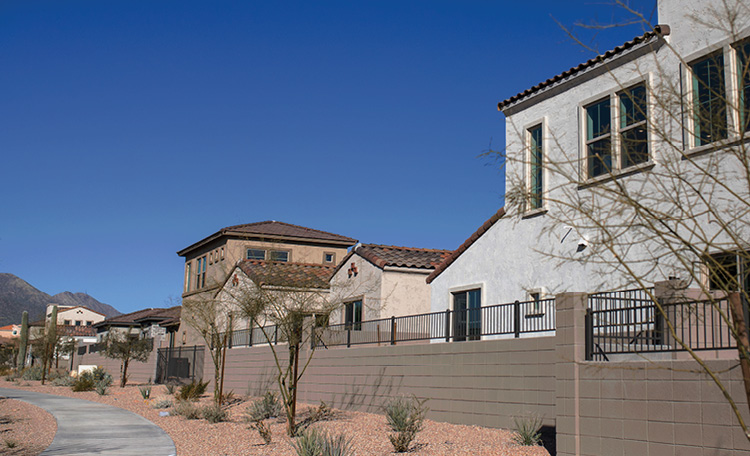For grocery shoppers and diners in cities like Barcelona, New York, or Singapore, there’s a growing chance the food they’re purchasing has come from a local urban farm. That’s because urban farming, also called urban agriculture, has become increasingly popular in recent years. Champions of the concept point to its positive outcomes—boosting the efficiency of food production, for example, and lowering the impact on the environment relative to traditional farming by using water more efficiently and shortening the supply chain to lower carbon emissions. Advocates also note the social, educational and community-building benefits of urban farms, especially in the case of community farms and gardens.
But in the face of the pandemic and the ongoing threat of climate change, which have further exacerbated food security issues faced by millions worldwide, urban farming for commercial purposes has become even more relevant in today’s supply chain-constrained and inflationary market—and more cities and businesses are taking heed.
FORECASTS SUGGEST CHALLENGES FOR TRADITIONAL AGRICULTURAL PRODUCTION
Climate change and supply chain disruptions continue to have a dramatic impact on food production. Agriculture currently accounts for 70% of annual global freshwater use External Link. Within this century, according to the Intergovernmental Panel on Climate Change (IPCC) External Link, global temperatures are expected to increase by two to four degrees Celsius. Further, precipitation is expected to decrease by 10–30%. Some forecasts suggest rainfall will become much more sporadic and unpredictable, often characterized by intense periods of heavy rain, all of which could very well lead to the erosion of land and loss of agricultural capacity.
Some experts warn that these increasing temperatures will not only threaten crops, but will also lead to increased pesticide use External Link, negatively impacting human health. Additionally, to offset the loss of fertile soil caused by intensive agricultural practices, more fertilizers will likely be required to sustain crop production levels.
Beyond these environmental challenges, food security will be further strained by a growing global population, estimated at 7.7 billion today and expected to reach 9.7 billion by 2050. The corresponding rise in food demand will put acute pressure on the world’s agricultural producers. And with more than 60% of the world’s population living in cities by 2030, urban centers will likely need innovative solutions.
While solutions to these global climate and demographic challenges may emerge and mitigate threats to feeding the world, innovators are working today to be prepared nonetheless, and some are looking at commercial real estate as part of the answer.
THE INTERSECTION OF COMMERCIAL REAL ESTATE AND URBAN FARMING
Rapid urban development and geographical constraints globally have been reducing available arable land near population centers for decades. To potentially fill a gap, more companies, organizations and building owners are turning to vertical farming operations like hydroponics, aeroponic and aquaponics. These vertical farms require less space relative to traditional soil farms to produce similar yields, and they can be located in underutilized assets or surface areas such as rooftops and empty parking lots. While only a small percentage of commercial and residential projects are currently incorporating vertical farming, the nascent effort is a global one—from Asia to Europe to the United States, urban farming pioneers are exploring the possibilities.
Singapore, for example, has been historically dependent on imports for 90% of its food supply, making its residents particularly vulnerable to supply issues. But Singapore’s first commercial rooftop farm, ComCrop, is working to change this dependence. Occupying what was once a massive vehicle parking lot, the 8,000 sf rooftop farm uses California-based AmHydro’s hydroponic growing systems to produce vegetables and herbs, and it yields six times more than a conventional farm of the same size. An added bonus, ComCrop also employs the elderly and people with disabilities from nearby communities.
In Europe, Basel, Switzerland became the first city in the world to make green spaces a legal requirement on all new and retrofitted buildings with flat roofs. More than 11 msf of green roofs have been constructed in the past 15 years as a result, making Basel one of the greenest cities in the world. UrbanFarmers built the first commercial rooftop aquaponics farm in Basel in 2012. The 2,800 sf aquaponics farm produced 1,550 pounds of tilapia and 7,700 pounds of vegetables within its first year, which it then sold to local restaurants.
Projects in the U.S. include JetBlue’s urban farm at the John F. Kennedy Airport in New York, the first functioning urban farm in the world at an airport property. The 24,000-square-foot farm relies on 2,300 plastic milk cartons to create plant beds whose soil is created by food waste donated by the airport’s restaurants. Three thousand crates of blue potatoes, arugula, beets, mint, basil and more are produced and distributed annually out of this unique operation.
Given that innovators like these are demonstrating that commercial food production can be integrated into commercial buildings both from a technical and economic standpoint—and given that commercial real estate occupiers and investors are increasingly interested in sustainable practices and projects—it’s not hard to imagine that commercial real estate industry participants will have increasing incentive to consider vertical farming operations.
HOW IT ALL WORKS
Vertical farming can thrive both indoors and outdoors within multiple property types—from industrial facilities to commercial offices. Within commercial spaces, for example, vertical farms can be housed on underutilized rooftops, within parking structures, courtyards or other common areas. Vacant or obsolete industrial properties are good candidates for indoor vertical farming systems, given their large spaces and given that soil and sunlight aren’t required. The Plant in Chicago a good example of a vacant industrial facility in Chicago’s historic Union Stockyard that underwent such a transformation, becoming an innovative development that is now part vertical farm, part food incubator, part research facility and part educational space.
Indoor operations: While vertical farming in indoor spaces requires an energy-intensive, controlled environment, it uses water highly efficiently, requires fewer pesticides and reduces the area required to grow the crops relative to conventional agriculture. For example, two and a half acres of recirculating hydroponic greenhouses can potentially replace 25 acres of land while saving 75,000 tons of freshwater each year.
Operators can gain additional efficiencies by harvesting rainwater and using treated building grey water in the growing process. For instance, hydroponics systems for lettuce production can reduce water consumption to near net zero, consuming only 3% of the water required for soil-grown lettuce.
Additionally, because the operations are enclosed, plants are protected from variable weather patterns and are largely protected from pests, greatly reducing pesticide use.
Outdoor operations: Outdoor food production on walls and roofs is less energy intensive than indoor practices, but it does come with some trade-offs. For one, it requires more water. Additionally, crops are more exposed to pests and severe weather.
WHY URBAN FARMS MAY CONTINUE TO GROW
Although some vertical system technologies are still nascent and require considerable capital investment, the potential upside and benefits may continue to draw more attention from building investors and operators around the world.
Commercial building benefits. Experts propound that urban farming lowers the carbon footprint of a building by making it greener and more sustainable, helping investors achieve their ESG goals. Integrating agricultural production into building design, for example, can help reduce building energy demands by providing additional insulation to buildings, leading to 1-15% in energy savings External Link. According to the National Research Council Canada, a simple storefront hydroponic vertical garden in a multistory building was found to decrease energy consumption by reducing the need for cooling by 23%.
Beyond ESG benefits, real estate owners can achieve greater economic outcomes as green buildings generally command higher rents (see our series Green is Good). Tenants too can benefit by occupying these kind of facilities, satisfying their own ESG commitments and demonstrating that commitment to employees who want to work for good stewards of the environment.
Environmental and health benefits. Like other urban green spaces, urban farms contribute to microclimatic effects that help regulate city temperatures, provide sound insulation and purify the air External Link. Vegetation absorbs and retains rainwater runoff, as well. Several studies have reported the enormous positive impact that these green urban pockets have on human health by reducing stress and cardiovascular diseases.
Community benefits. Urban farming, advocates say, can enhance social cohesion in communities. While less so for commercial operations, community urban farms often incorporate educational- or community-led programs allow for individuals to participate in harvesting their own produce. Alternatively, Community-Support Agriculture (CSA), which involves consumers supporting a local farm and sharing operational costs, is increasingly acknowledged throughout Europe as a more sustainable food production system and has been found to save consumers between 27-72% External Link compared to retail values.
Economic benefits. By incorporating food cultivation into the building environment and community, experts suggest we effectively integrate more circular economy practices in our food supply chains while also creating green jobs and educational programs and upskilling employees. Urban agriculture has the potential to stimulate a green economy by attracting professionals such as farmers, engineers, technicians and scientists. It also provides opportunities for local food processing while contributing to a high quality and sustainable service economy.
Read the article. External Link






